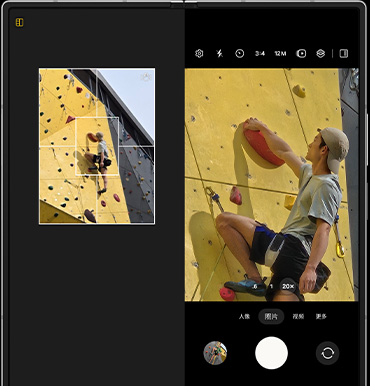
As we move into 2025, Google is set to continue its evolution in the smartphone market with the next iteration of the Pixel series. The company has consistently raised the bar in terms of AI-driven software, clean design, and exceptional camera performance, and all signs point to the Pixel 2025 series being no different. While there are no official announcements yet, let’s take a look at the potential features and improvements that could define the next Pixel flagship.
1. Design: A New Era for Pixel
The design of Google’s Pixel 2025 phones will likely push the boundaries of innovation. While the Pixel series has always been known for its clean, minimalistic design, the 2025 model could adopt a more futuristic look with thinner bezels and even sleeker lines. We might see a larger display-to-body ratio, potentially introducing an under-display camera for a truly bezel-less experience.
The use of premium materials like frosted glass or ceramic could make a return, offering a more tactile and premium feel. Additionally, the Pixel 2025 might sport even more vibrant color options, similar to the more playful hues seen in recent releases, but with improved finishes to resist fingerprints and scratches.
2. AI-Powered Hardware: The Evolution of Tensor Chips
Google’s proprietary Tensor chips have been at the heart of Pixel phones since the Pixel 6, and it’s expected that the Pixel 2025 will continue this trend. The new Tensor G3 or G4 chip (depending on the naming convention) could bring even more power to the device, particularly in terms of AI processing, machine learning, and computational photography.
The next-gen Tensor chip could feature more advanced on-device AI capabilities, further refining features like real-time translations, context-aware notifications, and image recognition. Expect improvements to Google’s Assistant, which might become even more intuitive, understanding more complex queries and performing tasks in a faster and more accurate manner.
Moreover, the addition of better GPU capabilities could elevate the gaming and video editing experience, with smoother performance and more immersive graphics.
3. Camera: The Next Step in Computational Photography
Google has always been at the forefront of smartphone photography, and 2025 is likely to be no exception. The Pixel 2025 may feature an even more advanced camera system, potentially adding a higher resolution primary sensor, like a 108MP or 128MP lens, combined with the magic of Google’s computational photography. Expect improvements in low-light performance, dynamic range, and color accuracy.
The ultra-wide lens could also see an upgrade, offering better distortion correction and capturing wider angles without compromising quality. Additionally, the telephoto lens could receive a boost, with improved optical zoom—possibly up to 5x or more, compared to the current 3x.
Night Sight and Portrait Mode will likely get smarter, with better edge detection, especially for challenging subjects like hair or transparent objects. Expect Google to continue refining its software processing to deliver better skin tones, facial details, and realistic lighting in portraits and selfies.
4. Display: Next-Gen OLED and 120Hz Across the Board
Google’s OLED displays have been a staple of the Pixel series, and the 2025 model will likely continue to use this technology, potentially adopting the latest OLED advancements like improved color accuracy, brightness, and energy efficiency. We can also expect all Pixel 2025 devices to feature a high refresh rate of at least 120Hz for smoother scrolling, gaming, and animations.
With an increased emphasis on multimedia consumption, Google might also integrate an upgraded HDR display with higher peak brightness levels for an even more vibrant viewing experience, whether you’re watching movies or playing games.
5. Battery Life: Faster Charging and Smarter Power Management
Battery life is always a concern with smartphones, especially as display technology and processing power advance. The Pixel 2025 could feature a larger battery, possibly exceeding 5,000mAh, combined with smarter power management, to ensure the device lasts all day even under heavy use.
On the charging front, expect Google to introduce faster charging speeds—perhaps up to 45W or 50W—ensuring that users can charge their phones from 0% to 50% in just 20-30 minutes. Wireless charging speeds might also be improved, and Google may add reverse wireless charging to ensure that other devices like wireless earbuds and smartwatches can be charged on the go.
6. Software: Android 16 and Enhanced Google Services
Android 16, the next major iteration of the operating system, is expected to bring some exciting new features and enhancements, especially in terms of privacy, security, and AI capabilities. The Pixel 2025 will likely ship with this new version of Android, offering features like more advanced gesture controls, refined app navigation, and enhanced multitasking.
Google is expected to continue refining its AI-powered features, with improvements to Google Assistant, live translations, and on-device processing. The search giant will probably also introduce more context-sensitive features, where the phone’s AI predicts your needs based on your habits and surroundings.
Additionally, we might see further integration with Google’s broader ecosystem of devices, including the Google Nest smart home products, wearables, and even the upcoming foldable or tablet devices, creating a more seamless experience across the board.
7. 5G and Connectivity: Faster Speeds and Better Coverage
The Pixel 2025 will likely support the latest 5G bands and improvements to connectivity, offering faster download speeds, improved signal strength, and better network efficiency. Google is expected to continue refining its connectivity algorithms, ensuring that users have the best possible connection whether they’re on 5G, Wi-Fi, or Bluetooth.
Wi-Fi 6E support could be another upgrade, offering faster wireless internet speeds and less congestion on busy networks. Bluetooth advancements may also improve, especially for audio devices, with the potential introduction of Bluetooth LE Audio for improved sound quality and efficiency.
8. Sustainability: Google’s Green Future
As the tech industry moves towards greater sustainability, Google will likely continue its efforts to reduce the environmental impact of its products. The Pixel 2025 may use more recycled materials, including aluminum, glass, and plastic, and the company could implement a more sustainable manufacturing process.
We might also see Google improve its trade-in and recycling programs, encouraging users to recycle old devices in exchange for discounts on new phones. Battery longevity could be improved, as Google is committed to ensuring that Pixel devices continue to perform well even after multiple years of use.
9. Foldable or Dual-Screen Model: A Possible Innovation
While it’s a bit speculative, there is a chance that Google could introduce a foldable or dual-screen model in 2025. As foldable technology matures and gains popularity, Google might decide to enter the market with a Pixel device that combines the best of both worlds: a compact form factor when closed and a large, tablet-like display when unfolded.
This foldable Pixel could feature the same clean software experience as the rest of the Pixel lineup, but with added flexibility for productivity, gaming, and media consumption. Given Google’s focus on AI and machine learning, we might also see unique software features that take advantage of the foldable screen to enhance multitasking or app usage.
Conclusion: The Future of Google’s Pixel Devices
The Google Pixel 2025 is shaping up to be a highly anticipated flagship. With a sleek design, powerful performance, cutting-edge camera technology, and deeper integration with AI, the next Pixel will likely continue to set the standard for Android devices. Whether Google decides to introduce a foldable form factor or keep the traditional slab design, the Pixel 2025 promises to be an exciting addition to the Pixel family.
As always, Google’s ability to seamlessly integrate hardware and software, combined with its innovative approach to AI and machine learning, will continue to set the Pixel apart from the competition in 2025.






